A Day In Dubrovnik - Twice
Saturday, March 14, 2009

I have lingered in Dubrovnik twice. The first time was in June 1985 (note the Yugoslavian visa in my Argentine passport) when Yugoslavia and Marshal Josip Broz Tito were indivisible. My journey to Yugoslavia was memorable before I even got there. Travel writer Garry Marchant had obtained a free trip for me on his fine literary coat tails. At the time he was the best travel writer in Canada.
 I’m a collector. I collect countries.
I’m a collector. I collect countries.
I don’t just go to new places to add them to the list, though, despite accusations of some friends. I am genuinely interested in every country, curious about the most remote, unlikely places. I didn’t start out this way.
Garry Marchant
Marchant, by then, had traveled just about everywhere in the world and he was (rare in his profession) completely unglazed in the eyes. Every voyage was a trip into the unknown. Alex,” he told me, “do as I do and all will be well.” So by the time our Yugoslavian Airlines plane was queuing for take off during a busy Toronto Airport morning, we were drinking Champagne. Somewhere in between (on our way to Zagreb) I distinctly remember staring at a marvelous mural dedicated to Nikola Tesla in the partition bulkhead in front of me. My memory then slipped away. The alarm that woke me came in the form of the noise of our plane’s wheels and the subsequent brakes as we landed in Zagreb. In my right hand I had a glass of Champagne. Marchant had expertly taught me how to shorten long trips with inimitable class.
 I’d discovered the gypsy in my genes,
I’d discovered the gypsy in my genes,
the nomad in my soul. A few short
trips followed – to Mexico and the
Caribbean. When the chance came to
live in Japan, I abandoned university
forever and headed for the exotic East
– the long way.
Garry Marchant
Yugoslavia was a delight. I tried many versions of the great delicacy that is an uncooked ham that comes from the pig's neck. It varied in saltiness but it was always delicious. I ate it three-times a day while Marchant washed his down with slivovitz. At a restaurant in Split, it was a sidewalk evening affair with monstrously large peaked serviettes to mark our places, we sat down to enjoy the warm evening. Just as I was about to feast on ham, butter and bread, Marchant stood up suddenly and was gone like a light. He returned a half hour later with a grin on his face. “I spotted a young woman walking a Dalmatian. We are on the Dalmatian coast, aren’t we?"
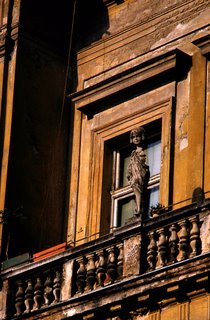 Although no longer a member, I
Although no longer a member, I
follow the criteria and the official list
of the California-based Travelers’ Cen-
tury Club (TCC), which requires that
applicants have visited 100 countries
to join. I do not count countries twice,
just because they change their name.
Haute Volta became Burkina Faso, but
I still only count it is as one country.
However, the former Czechoslovakia,
now the Czech Republic and Slovakia,
counts as two. That’s fair, as I’ve been
to both parts.
Garry Marchant
The rest of Yugoslavia was beautiful but there was almost no comparison to what awaited us in Croatia's port city of Dubrovnik, the old capital until 1918 of the city-state of Ragusa which for a while competed with Venice for fame, fortune and excellence in architecture.
 If I could only find and editor to take the story, I would love to visit Easter Island, to see those mysterious giant statues, faced resolutely inland. Although I’ve walked the dusty streets of such African towns as Ouagadougou and Bobo-Dialassou, I’ve yet to see Timbouktu – a major gap for a traveller. My collection includes a number of South Pacific Islands (Tonga,Samoa, Saipan,Tinian, Palau,Yap, Truk and many others),but I would gladly take the cruise from Tahiti to the Marquesas. It is a big, wonderful world out there, so many places, so many countries – 317 according to the TCC. Like all collectors, I want the full set.
If I could only find and editor to take the story, I would love to visit Easter Island, to see those mysterious giant statues, faced resolutely inland. Although I’ve walked the dusty streets of such African towns as Ouagadougou and Bobo-Dialassou, I’ve yet to see Timbouktu – a major gap for a traveller. My collection includes a number of South Pacific Islands (Tonga,Samoa, Saipan,Tinian, Palau,Yap, Truk and many others),but I would gladly take the cruise from Tahiti to the Marquesas. It is a big, wonderful world out there, so many places, so many countries – 317 according to the TCC. Like all collectors, I want the full set.
Garry Marchant
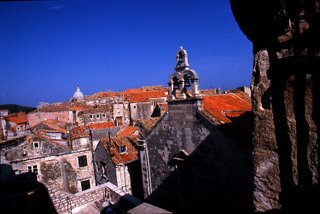
For a few years I felt disappointed that I never had the chance to photograph Karen Kain. Then I photographed Evelyn Hart and my disappointment faded. Unlike Rosemary I have never been in Venice. Every once in a while I have felt that Karen Kain loss. But then I remember that I have been in Toledo, Guanajuato and Dubrovnik. Those three beautiful cities are my geographical Evelyn Harts.
While in Dubrovnik, I sampled some startlingly white cherries, with some bread, butter and… in a nearby offshore island called Lokrum. There is the legend that when Richard the Lionhearted was returning from the crusades around 1192 his ship was almost wrecked there but was sheltered by the protective old Lokrum cove, Skalica. Thanking God for his survival he vowed to build a church in honour of the Virgin. According to old Dubrovnik chronicles, as soon as the people of Dubrovnik noticed the anchored ship, they sent a delegation, welcomed the king and brought him into the town. They honoured Richard with gifts and let him rest and recover. Coincidentally, at the same time, the Senate planned to erect a new church, so they succeeded in persuading the king to intend his votive present to the cathedral, and they would in return fulfill his vow by building the church on Lokrum. Afterwards, Richard sailed towards his destination on a Dubrovnik ship. We know he did not get to his destination and the rest, be it history or fantasy, (Robin Hood and Ivanhoe) is well known.
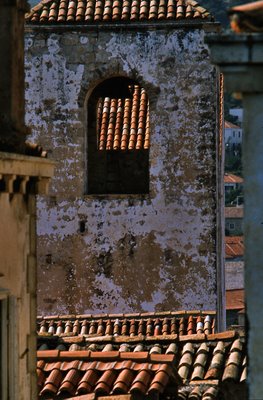
But it was the ash in an ashtray that really brought Lokrum into my heart that day. Our guide told us that Maximilian, Archduke of Austria, who became Emperor in Mexico, had lived and vacationed on the island. While he affirmed that the ash was from one of Maximilian’s cigars I doubted it but I was still overcome by how two far away places, Mexico and Dubrovnik (from my now native Vancouver) suddenly had a strange but beautiful bond. Our guide told us this story:

The Austrian ship Triton exploded in the Lokrum canal in 1859. There was but one survivor. He had been imprisoned in the war ship’s hold for some crime. The explosion expelled the man with remnants of the chain onto the shore, unharmed.. The Austrian Admiralty entrusted the investigation of the catastrophe to a commander of the imperial fleet - Maximilian. He fell in love with Lokrum, purchased it and started the wheel of fortune that led him to a firing squat on the Cerro de Las Campanas in Querétaro, Mexico, June 10, 1867. During his stay on Lokrum with his wife Carlota, the lovestruck Maximilian engraved a heart containing the first letters of his and Carlota’s name into a huge oak dating to the 14th century, located next to the palace he built for her. According to romantic legend, he thereby incurred hostility. It was a historical oak, under which the Dubrovnik Senate met frequently. A storm appeared before he returned to the shores of Lokrum. Lightning struck this oak tree and the engraved monograms disappeared, leaving only the heart. Before he faced his firing squad Carlota would plead to various European kings to intercede. They didn’t. Carlota slipped into insanity. Many suspect she never accepted her husband’s death.
For me what is most remarkable of this romantic tragedy is that Carlota lived on thinking she was the Empress of Mexico until 19 January 1927, modern times! To this day I marvel on how the ash of a cigar can transport us to places that are so unexpected and yet so historically logical but fantastic.
My second journey to Dubrovnik came Thursday night via four black gentlemen wearing white summer tuxedos in Freiberg, Germany.
A couple of years ago Rebecca had enjoyed dancing in our living room to the Prestige (7109) CD Bags Groove- Miles Davis with Sonny Rollins, Milt Jackson, Thelonius Monk, Horace Silver, Percy Heath and Kenny Clarke. I gently pushed some more jazz CDs in her direction and she genuinely developed a liking for Milt Jackson's Bags Groove in as many versions as I own. So for Christmas I gave her a DVD, The 35th Anniversary Tour - The Modern Jazz Quartet, John Lewis, piano, Milt Jackson, vibraphone, Percy Heath, bass and Connie Kay, drums. At dinner on Thursday night I noticed the DVD in a pile of film DVDs. I did not bother to ask her if she had ever seen it. I put it into my overcoat pocket and went home.
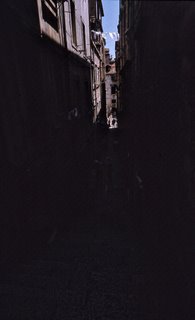
I watched the video. The concert includes many MJQ standards like Django and Rebecca's favourite Bags' Groove written by Milt Jackson. But it was the last number that floored me into Dubrovnik nostalgia. The quartet played an 18 minute long composition called A Day In Dubrovnik. I have a cassette tape version but it is a collaboration with The New York Chamber Symphony called Three Windows which many experts call an almost perfect melding of jazz and classical music. It is a beautiful tape. But it was nothing like this quartet version. All three movements Afternoon, Night and Morning (in that unusual order) are seamlessly joined.
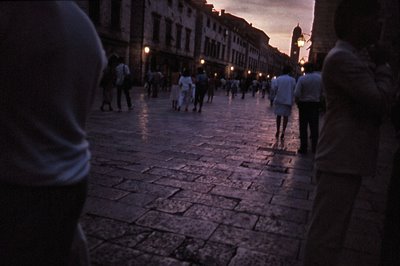
As John Lewis explained with a smile, the tourists arrive in their cruise ships in the afternoon, the city comes alive in the evening and by morning Dubrovnik is its busy normal self.
Dubrovnik, the first time.
Exotic Canada, Jorge Luis Borges, Al Capone & Adolf Hitler
Friday, March 13, 2009
 Canada is so far away it hardly exists.
Canada is so far away it hardly exists. Jorge Luis Borges
An architect friend of mine said to me last Saturday, “Guess where we are going to next week?” I couldn’t have possibly guessed knowing he and his partner go to places most exotic. So he said, “Bhutan.” Last year Rebecca, Lauren, Rosemary and I were dining at a delightful sea food restaurant in Qualicum called Fish Tales. At a table near us some elderly gentlemen and their wives were discussing a cruise ship vacation that took them to Peru and Machu Picchu. They were comparing notes. I suddenly felt sad knowing that if I ever got to Machu Picchu I would probably be their same age. Would I then be able to enjoy it? Or would I simply be doing Machu Picchu?
I have written here before that if I suddenly found myself in Venice for a few months I would soon feel nostalgic for Vancouver and I would go out in search of a lovely Canadian woman and convince her to pose for me undraped under an umbrella. I would feel nostalgia for Vancouver’s rain.
The concept of what is an exotic place is probably directly proportional to its distance from your place of origin. In the early 50s when I happened to go to the Buenos Aires airport at Ezeiza to receive a visiting relative I would stare with an unexplained longing at airplanes that had the logo of Canadian Pacific on their side. Now, that was exotic! Forget Bhutan! Forget the familiarity of a Cathay Pacific or Japan Airlines 747. Remote Canada was as exotic and far as any country could possibly be. I don’t think that idea of Canada's remoteness has ever gone away from me even though I now live here in Canada.
 "I don't even know what street Canada is on." "I don't even know what street Canada is on." Al Capone in 1931 when asked by a newspaper reporter if Canada was the main source of supply for his lucrative bootlegging empire.
Perhaps it is for that reason that after 35 years in Vancouver and in Canada I feel like a tourist, like an interloper. When I walk the streets of Vancouver and I look around I feel I am looking into a TV documentary on Canada. I used to tell my fine Argentine friend, Juan Manuel Sánchez, “You and I are penguins in the arctic.” He finally convinced himself that as a penguin he belonged in the Southern Hemisphere so he is back and living in his beloved Buenos Aires.
 "In Canada, for example, there are 2.6 persons per square mile; in other countries perhaps, 16, 18, 20 or 26 persons. Well, no matter how stupidly one manages one's affairs in such a country, a decent living would still be possible. " "In Canada, for example, there are 2.6 persons per square mile; in other countries perhaps, 16, 18, 20 or 26 persons. Well, no matter how stupidly one manages one's affairs in such a country, a decent living would still be possible. " Adolf Hitler, 1940 in a speech in Berlin

Yesterday morning I walked to my bus stop on 41st and Granville to take an articulated B-Line to town. I was going to have lunch with friends Don Stewart (Macleod’s Books) and journalist and airplane enthusiast Sean Rossiter. It was cold and I was wearing my newish London Fog overcoat. As I was waiting for the bus I suddenly felt more than ever like that penguin. I looked at the cars and then at the cyan/blue sky over the North Shore mountains. It was all alien to me. I felt out of place, still a tourist in an exotic land.
Thursday, March 12, 2009
"Ah-smiled the colonel- to be a gringo in Mexico. That is better than suicide. That is what the Old Gringo used to say.Gringo Viejo - Carlos Fuentes 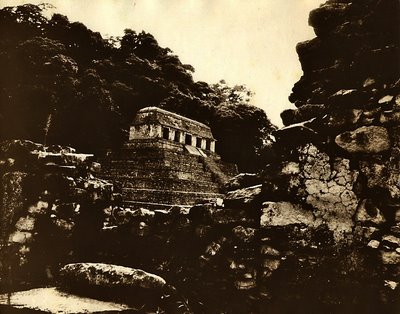 One of Graham Greene's few books that I never managed to read until recently was his 1939 account of his trip to Mexico, The Lawless Roads. I had heard of this book and perhaps because he is so negative on Mexico I was never ever able to find a copy in Mexico during my years there. This last week I corrected my omission and bought a hardcover 1978 edition at MacLeod's Books on 455 West Pender. There are many who assert that Greene traveled to Mexico to avoid being extradited for libel as Mexico lacked an extradition treaty with Great Britain. Greene supplemented his novelist's income with freelance journalism, book and film reviews for The Spectator, and co-editing the magazine Night and Day, which folded in 1937 shortly after Greene's film review of Wee Willie Winkie , featuring nine-year-old Shirley Temple, cost the magazine a lost libel lawsuit. Greene's review claimed that Temple displayed "a certain adroit coquetry which appealed to middle-aged men". This statement is now considered one of the first criticisms of the sexualisation of children for entertainment. The criminal libel could have led to Greene's imprisonment, and its avoidance, according to Greene's friend Alberto Cavalcanti in an unpublished autobiography, was the motivation for the visit to Mexico which was to inspire The Power and the Glory.  Mr. Tench went out to look for his ether cylinder, into the blazing Mexican sun and the bleaching dust. A few vultures looked down from the roof with shabby indifference: he wasn't carrion yet. A faint feeling of rebellion stirred in Mr. Tench's heart, and he wrenched up a piece of the road with splintering finger nails and tossed it feebly towards them. One rose and flapped across the town: over the tiny plaza, over the bust of the ex-president, ex-general, ex-human being, over two stalls which sold mineral water, towards the river and the sea. It wouldn't find anything there: the sharks looked after the carrion on that side. Mr. Tench went on across the plaza. Mr. Tench went out to look for his ether cylinder, into the blazing Mexican sun and the bleaching dust. A few vultures looked down from the roof with shabby indifference: he wasn't carrion yet. A faint feeling of rebellion stirred in Mr. Tench's heart, and he wrenched up a piece of the road with splintering finger nails and tossed it feebly towards them. One rose and flapped across the town: over the tiny plaza, over the bust of the ex-president, ex-general, ex-human being, over two stalls which sold mineral water, towards the river and the sea. It wouldn't find anything there: the sharks looked after the carrion on that side. Mr. Tench went on across the plaza.The Power and the Glory So in Villahermosa there is nothing to do all the long Sundays that go on and on but sit in Victorian rocking chairs, swinging back and forth waiting for the sunset and the mosquitoes. The vultures group themselves on the roofs like pigeons: tiny moron heads, long necks, faces like Carnival masks, and dusty plumages, peering this way and that attentively for a death. I counted twenty one on the roof. They looked domesticated, as if they were going to lay an egg. And I suppose even a bird of prey does sometimes lay an egg.The Lawless Roads I went for a walk on shore; nothing to be seen but one little dusty plaza with fruit-drink stalls and a bust of Obregón on a pillar, two dentists' and a hairdresser's. The vultures squatted on the roofs. It was like a place besieged by scavengers - sharks in the river and vultures in the streets.The Lawless Roads. Greene picks the jungle isolated (more so in 1938) ruins of Palenque in the State of Chiapas as his "Holy Grail" excuse to venture into a country he spends much time describing his loathing for.  I had been in Palenque, too in the late 70s and it seems after reading Greene's description things had not changed much. The heat was almost unbearable. I was chain-smoking Flor de la Costa cigars from Veracruz to keep the mosquitoes at bay. The ruins were deserted, too. But unlike Green I experienced a fine and cooling tropical rain sheltered inside the Temple of the Inscriptions. When I rendered my photograph of it into a sepia colour I almost think it is much as Greene saw it.  Well, I had told people I was here in Chiapas to visit the ruins and I had visited them; but there was no compulsion to see them, and I hadn't the strength to climb more than two of the slopes and peer into two of the cold snaky chambers. I thought I was going to faint; I sat down on a stone and looked down - at trees, and nothing but trees, going on and on out of sight. It seemed to me that this wasn't a country to live in at all with the heat and the desolation; it was a country to die in and leave only ruins behind. Well, I had told people I was here in Chiapas to visit the ruins and I had visited them; but there was no compulsion to see them, and I hadn't the strength to climb more than two of the slopes and peer into two of the cold snaky chambers. I thought I was going to faint; I sat down on a stone and looked down - at trees, and nothing but trees, going on and on out of sight. It seemed to me that this wasn't a country to live in at all with the heat and the desolation; it was a country to die in and leave only ruins behind.The Lawless Roads When I happen to walk around Coal Harbour and other new condominium areas of Vancouver and I note the brand newness of everything, that metalic surgical clean, and the high technology entry systems I long for the humidity, the heat and even the "cold snaky chambers" of Palenque. I long for Mexico but unlike Greene, but like his journalist colleague Ambrose Bierce (as described beautifully in Carlos Fuentes' novel El Gringo Viejo), I would be prepared to die there. Night and Day, October 28, 1937 The Films by Graham Greene Wee Willie Winkie
The owners of a child star are like leaseholders — their property diminishes in value every year. Time's chariot is at their backs: before them acres of anonymity. What is Jackie Coogan now but a matrimonial squabble? Miss Shirley Temple's case, though, has peculiar interest: infancy with her is a disguise, her appeal is more secret and more adult. Already two years ago she was a fancy little piece — real childhood, I think, went out after The Littlest Rebel. In Captain January she wore trousers with the mature suggestiveness of a Dietrich: her neat and well-developed rump twisted in the tap-dance: her eyes had a sidelong searching coquetry. Now in Wee Willie Winkie, wearing short kilts, she is a complete totsy. Watch her swaggering stride across the Indian barrack-square: hear the gasp of excited expectation from her antique audience when the sergeant's palm is raised: watch the way she measures a man with agile studio eyes, with dimpled depravity. Adult emotions of love and grief glissade across the mask of childhood, a childhood skin-deep.
It is clever but it cannot last. Her admirers — middle aged men and clergymen — respond to her dubious coquetry, to the sight of her well-shaped and desirable little body, packed with enormous vitality, only because the safety curtain of story and dialogue drops between their intelligence and their desire. "Why are you making my Mummy cry?" - what could be purer than that? And the scene when dressed in a white nightdress she begs grandpa to take Mummy to a dance - what could be more virginal? On those lines in her new picture, made by John Ford, who directed The Informer, is horrifyingly competent. It isn't hard to stay to the last prattle and the last sob. The story — about an Afghan robber converted by Wee Willie Winkie to the British Raj — is a long way after Kipling. But we needn't be sour about that. Both stories are awful, but on the whole Hollywood's is the better. In 1947 John Ford directed The Fugitive , a film based on Greene's Power and the Glory.
Wednesday, March 11, 2009
José Verstappen, below left, the Executive Director of Early Music Vancouver has patiently nurtured a relationship with great baroque orchestras of the world and virtuoso performers while balancing it all by hiring and featuring local orchestras. It is because of this that he is giving Vancouver (and me!) the oportunity to listen to all six of Bach's Brandenburg Concertos played by one of the finest Baroque ensembles of the world, The Academy of Ancient Music. This is not an event that happens with any kind of frequency.
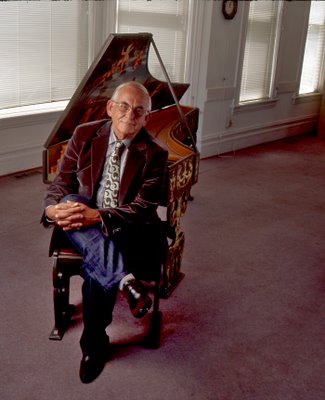
I don't as yet have the ambition of sitting down to watch Richard Wagner's Der Ring des Nibelungen. As my Argentine nephews would so crassly point out, "You would not want the line between your buttocks to disappear." My musical ambitions to listen to complete or rare pieces of live music are slightly more restrained but probably less likely to occur in one's lifetime.
Yet, 2008 and 2009, so far, have been excellent years for fulfilling these musical rights of passage. That they have happened or will happen in Vancouver is most extraordinary. I have my doubts that Toronto or Montreal and perhaps not even New York City could have mounted these three performances in a 5 month period. Consider:
November 29, 2008: Olivier Messiaen’s The Quartet for the End of Time performed by The Turning Point Ensemble.
February 15, 2009: Erik Satie’s Relâche performed by the Turning Point Ensemble.
March 11 (today), 2009 Bach’s The Six Brandenburg Concertos performed by The Ancient Academy of Music
In Mexico City I was lucky enough to listen to 5 of the 6 Brandenburg Concertos. The second one, in F major, was not performed as the impossibly difficult valveless trumpet, the clarino, part is even more difficult to play in Mexico City's rarified air.
Tonight I will be sitting with my friend Graham Walker at the Orpheum and we will delight at listening to all 6. The Orpheum's plush seats will keep the parting of that which we sit with intact.
Without any other factors to consider it would be enough for me to attend the concert knowing that The Academy of Ancient Music (its modern incarnation started when it was founded by Christopher Hogwood in 1973) had its beginnings in 1726 and that some of its concerts featured the then new music of Handel and his physical presence!
Furthermore after having gone to numerous Early Music Vancouver concerts in the past that featured harpsichordist Richard Egarr (now musical director of the Academy) I would not miss this concert knowing that this unassuming virtuso with a penchant for loud ties and socks will be in town again to lead in a performance of these works by a small ensemble of solo instruments. Scholars believe that the Brandenburgs were never intended for large orchestras.
When I sit with Graham Walker tonight my mother will be with me in spirit. She always told me that her desert island music could only be the complete Brandenburgs. "I would not need to listen to anything else. I would never grow bored of them."
But there are other interesting facts about the Brandenburgs, named after the Margrave of Brandenburg, who commissioned Bach to compose them. Bach was too busy to compose from scratch. So he assembled his more-or-less recent work and sent it off with the appropriate humble dedication. Musical gossip loves tales of genius unappreciated, so it has often been told that the Margrave didn't think much of the package and never bothered to have any of it performed. Perhaps the real reason that these concerti were not performed is that they were much too difficult for the Margrave's orchestra to play. They are written in the Italian style, three movements: fast, slow, fast, except for Brandenburg No 1 which has four. And if you are at the concert tonight listen to that trumpet in the Number 2 Concerto in F Major to find out what difficult and fast is.
My two favourites are the one with the high-pitched instruments, Number 2 and Number 5 in D Major, which features an extraordinary harpsichord cadenza where the player is given room to improvise. I will be sure to take my binoculars to check on Egarr's socks.
A few months back I listened to the Pacific Baroque Orchestra play Bach's Concerto in D Minor for Two Violins. I noticed some similarity to the Brandenburgs. So I asked an expert, violinist Marc Destrubé, below, centre, for an explanation. This was his answer:
 I would say that what all of Bach's concertos have in common is a particular style (inspired very much from Italian models, Vivaldi in particular). The so-called 'joy-motive' I've referred to in rehearsal was first remarked on by Albert Schweitzer I believe, a three note figure which you hear repeated 5 times at the beginning of the Third Brandenburg concerto, for example. Once you've identified it, then you'll notice it all over the place (like noticing all the Audis on the road if you own one yourself), including in the opening of the last movement of the double violin concerto (although in this case it doesn't stop and repeat but is propelled forward); same with the opening movement of the E Major violin partita (No. 3). Which is also an organ prelude, and also used in a cantata.
I would say that what all of Bach's concertos have in common is a particular style (inspired very much from Italian models, Vivaldi in particular). The so-called 'joy-motive' I've referred to in rehearsal was first remarked on by Albert Schweitzer I believe, a three note figure which you hear repeated 5 times at the beginning of the Third Brandenburg concerto, for example. Once you've identified it, then you'll notice it all over the place (like noticing all the Audis on the road if you own one yourself), including in the opening of the last movement of the double violin concerto (although in this case it doesn't stop and repeat but is propelled forward); same with the opening movement of the E Major violin partita (No. 3). Which is also an organ prelude, and also used in a cantata.
In fact, once you start to explore this stuff in Bach you quickly get overwhelmed by the wonder of it all, particularly in the cantatas, virtually every page of which contains some magic stroke of musical symbolism (eg. the one alto aria in Tuesday's cantata concert has a transformation of tempo - from a leisurely minuet to a quick Allegro -just before the word 'verwechselt' (transforms) appears.
What a guy!
And it was Marc Destrubé in his years as founder and musical director of the Pacific Baroque Orchestra that he decided on an interesting experiment. The Pacific Baroque Orchestra would include in its program Brandenburg Concerto Number 3 in G Major and while commissioning Vancouver new music composer Bradshaw Pack to compose something inspired by it which he called Arioso Distante. When I attended the performance some years ago I spotted a beaming Pack in the back row. After the performance he told me, "Alex, only one person walked off!"
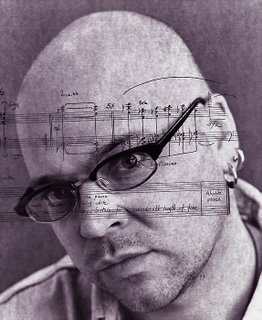
I asked Destrubé for a bit of background on this. Here is his answer:
Bradshaw's piece was commissioned for inclusion on a program with the 3rd Brandenburg concerto, suggesting that he use the same unusual (unique?) instrumentation: 3 violins/3 violas/3 cellos and basso (in Bach's case basso continuo being whatever combination of bass instruments might fit; in Bradshaw's case just a violone if I remember correctly - I'm at a French provincial airport after having celebrated my mother's 90th birthday).
I hope that helps.
Marc
An obscure fact. One of the musical selections chosen to represent the cultural self-image of the planet earth on the Voyager rockets in 1977 was an excerpt of one of the Brandenburgs, the first movement of the second concerto, on a sixteen and two third r.p.m.
Tuesday, March 10, 2009
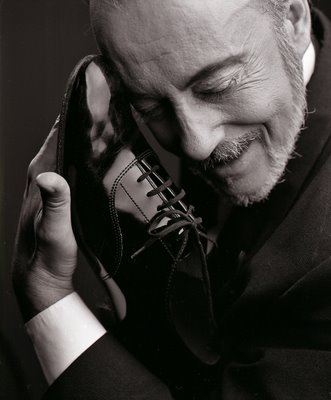
On Monday night I watched Carlos Saura's film Tango. I had first seen it when it came to Vancouver in 2002. Rosemary stayed upstairs. She knew I would be suffering from nostalgia and longing. Nostalgia and longing are not the same. Nostalgia is to want to experience something you had at one time. Longing involves knowing that it is a loss that is irreparable. Nostalgia is pleasant. To long for is to despair.
In November 2001 I danced the tango with 78 year-old Dolly at the Club Banco de la Nación Argentina at Vicente Lopez, an outskirt of Buenos Aires. I danced for almost two hours and nobody noticed me.
Me quité la espina (or to remove that thorn from myself) is a an expression in Spanish about satisfying a mild desire to eat ice-cream or in my case to get rid of an obsession to dance the Argentine tango. I removed that thorn on that Saturday evening at Vicente Lopez.
Before that, I was never able to dance the tango or dance at all because my father was such a good tango dancer. I grew up with a block about ever being able to dance anything. But it was around 1997 that I finally decided that my internal obsession for the tango (a thorn in my side!) had to be satisfied or exorcised.
That first and best teacher of mine right here in Vancouver, Argentine Carlos Loyola, (below left with partner) watched me stumble and said to me, “I will teach you to dance the tango as well as your father danced.” He almost delivered but then I must have been a lost cause. While Carlos Loyola inspired and pushed me to perfection, my lack of it made him angry and I soon was almost afraid. It was a second Carlos, the great Argentine tango dancer Carlos Gavito who taught me to accept what I did with resignation and contentment.
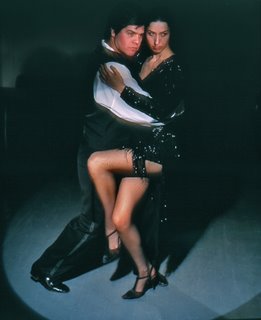
It all began at a March 1997 performance of Forever Tango at the Vogue on Granville. The performance made me realize I had been repressing my Argentine heritage. I decided to learn the tango. I think I was so inclined because I watched Carlos Gavito dance in what looked like a simple (no quick and fancy steps) performance with his sultry red-headed partner, Marcela Durán. The slightly paunchy, bearded man with a receding hairline got the attention of my wife. She thought he was sexy. That had me worried as the “old” man, I found out later was a couple of years younger than I was.
While other dancers impressed us with leg ballistics, Gavito’s style was slow motion, with a particular step of his. Marcela Durán, her legs crossed at her ankles, was suddenly put at a 45 degree angle to the floor and Gavito would deftly swing her around like a merry-go-round while having her lean on his paunch. Because of the resemblance to a tent the step is called la carpa . Then and there I decided I had to learn the tango, and la carpa.

I had waited so long to commit. After all, I fell in love with Grace Kelley in 1956 when I was 14, watching her waltz with Louis Jordan in The Swan. Her marriage to Prince Rainier and my inability to dance made me a sad wallflower at the Catholic boarding school in Austin, Texas. To my classmates I was the Monk. If you didn’t dance you didn’t meet girls.
For some years the Monk showed up religiously with his wife Rosemary for weekly Tuesday and Friday practices the the Polish Community Centre on Fraser Street. There, because the tango is the tango, the Monk (giving somebody rabbit ears, is in picture below on the right side) was expected to dance with many partners. And because the tango is the tango when the Monk failed to glue his chest to his partner’s (in some cases and absolute stranger) I was chastised for not dancing properly. “Alex, unless you are close to your partner, “my instructor, Carlos Loyola would drum into me, “you will never learn to tango.” I had observed that when Loyola danced with women, he danced very close. One of the regulars in my class had once said, “He dances with her as if she were his suit.”
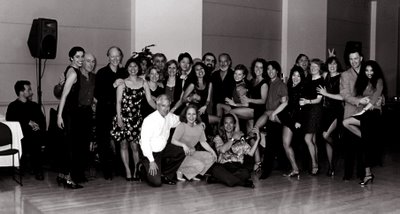
From Carlos Gavito, the legendary master from Avellaneda, I learned other truths about the tango. In a weekend beginner’s class he taught not moves, so much, as when not to move. He taught me la pausa. In tango the woman reacts to the man’s subtle indications of his right hand or body signs. Much like Prince Phillip follows the Queen, a few steps back, a good female tango dancer is always on her toes in a state of controlled imbalance, ready to swing in whatever direction the man chooses. When there are mood or tempo changes in the music, Gavito indicated to me, that is the moment when a man can simply stop, gather his thoughts, and only then might he move again.
Gavito who had been know to have given private classes to the tango obsessed Robert Duval when not tutoring the Monk or others taught me one more tango truth. “The tango does not come from here,” he said, placing his middle finger on his brow. He then placed his fingers on his heart. “…but from here. Tango," he stressed in his perfect Argentine-accented English, “is not steps. It is not tango or anything, if it does no come from the heart.”
I was elated when not only did nobody notice me dancing the tango in the old tango club but that my godmother and first cousin, Inesita O’Reilly Kuker and her daughter Marinés had not laughed at me. They had insisted on organizing the whole thing when I boasted to them that I had learned to dance the tango. “ Alexander,” my godmother and first cousin told me, “We are going to buy a bottle of Champagne and we are going to laugh at you.” They didn’t laugh at me. Nobody noticed me. I fit in. Finally that thorn on the side was gone. I was free. That thorn was in my head, not my heart. I should have known. Gavito had told me.

The story on how I came to take the above left photograph of Carlos Gavito is an interesting one. When I watched Gavito dance that March 1997 I had an idea.
"Do you want me to bring my partner?" Gavito asked me when I proposed a session in my studio. His partner, Marcela Durán was extremely beautiful but I said, "No I want you alone." I was to meet him outside the Vogue Theatre at 8:20 during the intermission. I was to have no more than 20 minutes.
Walking to my nearby studio people looked at us oddly. With his stage makup and dark Argentine suit Gavito looked like a vampire. On a rain slicked Granville Street it almost felt like we were strolling Avenida Corrientes in Buenos Aires.
I took a few tight portraits and showed him the Polaroids. Then I posed to him the problem, "A face is so far from the shoe. How is one to bring them together unless..." Gavito looked at me, then down at his charol (patent leather) shoes. He promptly removed one and brought it up to his face, "Una caricia (caress) por favor, "I asked.
Carlos Gavito died July 1, 2005
Rebecca Sips Moscato - Beau Geste & A Viking Funeral
Monday, March 09, 2009

It was around midnight in November of 2004 when Rebecca, Rosemary and I sat down at a sidewalk table of Pizzería Burgio on Avenida Cabildo in Buenos Aires for a pizza. Rebecca sipped some of my ice-cold moscato, It was hot and deliciously muggy as it felt like we were in the tropics. Buses were running in both directions on the 10-lane wide Cabildo and there were so many passersby on the sidewalk that it seemed like it was noon during an eclipse. On one of the corners I could spy Cine General Paz where so many years before, 1949 or 1950 I had seen Beau Geste with my father and mother.
At my age I have condensed some of the important events of my life into a few. Beau Geste with my parents is one. It seems that I first thought of death in that film as dead soldiers stand guard on the crenellated ramparts of Fort Zinderneuf. How can I possibly forget the exciting naval battle in the beginning of the film, at the lily pond of Brandon Abbas when Beau Geste (a young boy Geste) and his band float two ships of the line, the British one and the French one and the canon of the latter accidentally fires on Beau’s younger brother John. John is taken care by the band.
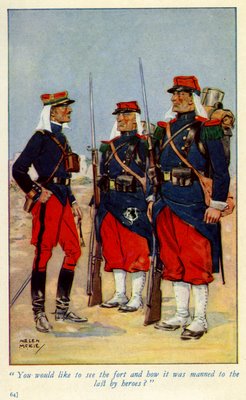 Blood oozed from the neat blue hole, and Faithful Hound uttered a dog-like howl of woe and horror. Claudia asked to be informed exactly how it felt. “Just like being shot,” I replied, and added: “I am going to be sick.”
Blood oozed from the neat blue hole, and Faithful Hound uttered a dog-like howl of woe and horror. Claudia asked to be informed exactly how it felt. “Just like being shot,” I replied, and added: “I am going to be sick.”
“Do it in the pond then,” requested the Captain [Beau], producing his pocket-knife and a box of matches. “Going to cauterize the wound and prevent its turning sceptic?” enquired the Lieutenant [ Digby, Beau’s twin brother] as the Captain struck a match, and held the point of the small blade in the flame. “No,” replied the Captain. “Naval surgery without aesthetics…Cut out the cannon-ball.” “Now,” continued he, turning to me as I sat wondering whether I should shortly had a wooden leg, “will you be gagged or chew on a bullet? I don’t want to be disturbed by your beastly yells.” “I shall not yell Captain, “I replied with dignity, and a faint hope that I spoke the truth.”
Beau Geste, Percival Christopher Wren
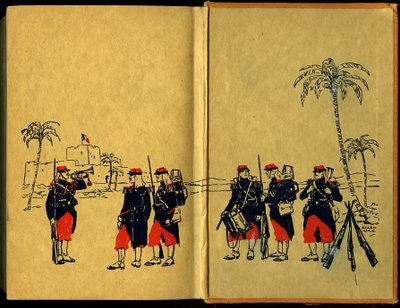
And of course in honour for his valour John Geste is given a Viking funeral and the French ship is sacrificed, or as Percival Christopher Wren writes, On this occasion, the offending French ship was dedicated to these ocean obsequies.
A specially selected lead soldier was solemnly endowed with the name and attributes of The Viking Eorl, John Geste, laid upon a matchbox filled with explosives, a pyre of matches built round him on the deck of the ship (the ship drenched with paraffin) his horse laid at the head of the pyre, and a small (China) dog at his feet.
All being ready, we bared our heads, Michael [Beau] with raised hand, solemnly uttered the beautiful words “Ashes to ashes, dust to dust, if God won’t have you the devil must,” and applying a match to the pyre, shoved the long-ship (late French battleship) well into the middle of the lily pond.
As any Beau Geste fan knows it is here where the honoured John promises his older Brother Beau a Viking Funeral should he ever fall in battle. I wasn’t to read the above words until many years later but Gary Cooper and company did a good job to amaze, to set my imagination free into somehow loving nautical novels, paradoxically in a film about the desert and the French Foreign Legion. And it is when young brother John finds himself in the middle of that Sahara Desert with the body of his older brother Beau that he is forced to consider carrying out his promise of the Viking Funeral.

I have been delaying that moment of transfer that I have imposed on myself to pass on to Rebecca. I want her to have that same right of passage that I had as a boy. But is she ready? Is the film much too complicated or sophisticated in comparison with modern fare? Am I on the wrong track with this film that probably means nothing to our present generation? I thought so until Saturday afternoon.
When we get Rebecca and Lauren for a weekend sleepover I go through the pleasure of planning a film afternoon on our TV. I go to Videomatica to pick a couple of films that will entertain us all. I was intrigued by Spanish director Imanol Uribe's film Carol's Journey and I noticed it had won much acclaim. How would Rebecca understand the concept of a little 12-year-old girl accompanying her mother to live in a small town in Spain during the Spanish Civil War. Would Rebecca understand when I explained that the little gir's father was an American pilot in the Lincoln Brigade and was fighting for the Spanish Republic with help from Communist Russia. Would she understand that the monarchists under Francisco Franco were really fascists backed by Nazi Germany?
In the end we had a most pleasant afternoon. At the dinner table Rebecca asked me about the justification for dropping the atom bomb over Hiroshima. We talked of Guernica, of Dresden of London and of Hamburg. I feel confident that any day now I will rent Beau Geste and all will be well with my world and Rebecca's.
Lauren at 6 seems to have a very good attention span and she was as fascinated as we were in watching the superb performance of Claro Lago who played Carol in tUribe's film. In my next viewing of Beau Geste I think I will have two little girls for company. I have a garden pond. I can get a couple of ships and...
Nicola Cavendish & My First Valentine With Joy
Sunday, March 08, 2009
 Listening to a relatively obscure Brahms piano sonata on the radio while driving, some years ago, made me stop the car. I parked it. I had never heard it before. It was exquisite. I found the need to call someone who understood. I called my VSO pianist friend Linda Lee Thomas. Her husband, Vancouver Chamber Orchestra director, Jon Washburn answered the phone. So I told him of my sonic "on my road to Damascus" adventure. He commented: "Ah, Alex, I envy you for being able to listen to something for the first time." I had a similar sonic (but also visual) experience of the sort last night. I was invited by my friend Abraham Rogatnick to a performance at PAL last night. PAL stands for Performing Arts Lodge, (see below). It is a beautiful new building with a roof garden that sits not far from the Bayshore Hotel on Cardero. The lodge houses many of BC's finest retired actors and musicians. They have started a series called Solo Series where one actor or actress gives a performance in PAL's intimate and small theatre while one drinks good wines and eats well in a most civilized manner.  In one of those strange circumstances where although I have photographed many prominent BC actors and actresses I had never photographed Nicola Cavendish. And I am ashamed (but also delighted, read on!) to admit I had never seen her in performance until last night. I had never seen her in Willie Russell's Shirley Valentine. I was perplexed that they were serving us Greek food. It was Rogatnick who explained that the play had a lot to do with Greece. The play, as it was explained to us by the delightful Cavendish, usually features actual cooking in a real kitchen. In this production she made the gestures of cooking eggs and chips. It was after her remarkable performance that she confessed, "There are so many things happening in this play but here, for the first time, I have been left alone with all the words. And what words..." Shirley Valentine has become a signature play for Cavendish and she has finally, as she told us, "Let it go." But she made an exception for us last night and I felt again as if I were listening to that Brahms piano sonata for the first time. What a wonder! What a delight! And what despair as I thought that could not write about it here. I have no picture of Cavendish. But it was Cavendish who gave me a pleasant solution when: 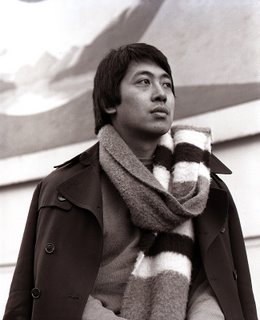 She mentioned that her first acting teacher had been the gracious Joy Coghill (PAL resident and advisor to the Solo Series). Some 15 years ago I had photographed Coghill (above, left) for a brochure for that years's YWCA Women of Distinction. Another PAL resident is David Y. H. Lui (left) founder of Ballet British Columbia. He was a dashing young man when I photographed him by the wall of the old Grayhound Bus Station. The next in the Solo Series is on Friday April 17 and Saturday April 18. It will feature Rosy Fire-Dryden in her tour de force performance of Martin Sherman's Rose - A moving journey through 20th Century Jewish life. To reserve: solo @shaw.ca
|







































